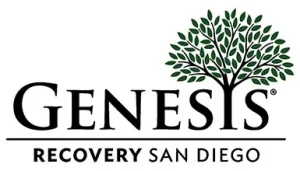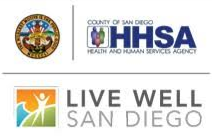Statistics
While President Trump and members of Congress have recently made prescription drug addiction a leading issue, some of the highest rates of addiction have been, and still can be, found in the U.S. capital. The number of drug overdose deaths, which are mostly from prescription drugs, has increased by more than 55 percent since 1999. According to a 2014-2015 National Drug Survey on Drug Use and Health, 70,000 D.C. residents suffered from substance dependence or a substance use disorder. Teens and young adults have been impacted as well. In 2015, 13.5 percent of D.C. students took a prescription drug without receiving a doctor’s authorization. Notably, female students reported the highest prescription drug misuse, with 4,035 cases in 2015.
A 2017 WalletHub report ranked the District of Columbia number one for drug use and addiction. The report further showed that D.C. ranked first nationally in the percentage of adults who needed but did not receive treatment for prescription drug use. Additionally, D.C. ranked second in the percentage of teens and adults who admitted to prescription drug use in the past year.
Solutions to Improve Safety of Prescription
D.C. was one of the last areas of the country to enact a prescription drug monitoring program. With the goal of minimizing the misuse of prescription drugs, D.C. launched a series of patient review and restriction (PRR) programs. Through PRRs, patients who are at risk for substance use disorder are assigned to predesignated pharmacies and prescribers to obtain their prescription. Patients are then required to receive any controlled substance prescription from the designated pharmacies, hospitals, and other providers. The PRR in D.C. was launched in 2016. The program uses specific criteria to identify at-risk individuals such as requesting three or more substance prescriptions per month, using three or more pharmacies per month, and visiting three or more prescribers for controlled substances in 90 days.
As of 2016, D.C. implemented the Prescription Drug Monitoring Program (PDMP) to monitor prescription data for controlled substances. The PDMP aims to reduce addiction and overdose trends by enabling prescribers and dispensers to assess a patient’s pattern of use and disuse. Furthermore, D.C. has also implemented doctor shopping laws, support for substance abuse treatment services, required prescriber education, rescue drug laws, physical exam requirements, ID requirements, and lock-in programs.
In Recent News
A new study found that many states in the Midwest and Mid-Atlantic are falling short in addressing the drug crisis. The study, conducted by the health research firm Avalere, found that these states have a significantly lower than average number of prescription drug treatment providers.
To combat these numbers, the state has introduced a new strategy to fight the drug crisis and the misuse of prescription medicine: medication disposal kiosks in Walgreens. The bins allow people to safely and anonymously drop off unused or no-longer-needed medications, including prescriptions. Since Walgreens opened its first kiosk in the spring of 2016, the pharmacy has collected more than 155 tons of unwanted medications from 600 kiosks and 45 states and the District of Columbia. Many are now realizing the importance of having a safe and convenient way to dispose of medications.
Prescription Drugs and Treatment
Opioid painkillers are the most widely abused prescription medication in the District, as they are known for their euphoric qualities. The non-medical and recreational use of opioid prescription medications can lead to tolerance as well as withdrawal symptoms when they are no longer being used. Methadone and buprenorphine are opiate drugs prescribed to recovering heroin addicts as part of medication-assisted treatment, but can also cause tolerance and addiction over time.
Individuals abuse central nervous system (CNS) depressants for their hypnotic and sedative qualities. While they are believed to be safe for short-term medical use, long-term medical use is controversial and recreational use can be life-threatening.
Prescription stimulants are the third most abused class in DC. They are sometimes used by recreational drug users as an alternative to methamphetamine. Stimulant abuse can lead to dependence over time and may require medical detox and additional treatment to enable recovery.
Almost 16,000 D.C. residents reported needing treatment for their addiction but found no help available to them. Only one in 10 Americans with a substance abuse disorder receive treatment nationwide.
Genesis Recovery offers its patients the opportunity to receive treatment for their prescription drug abuse while combining counseling, a supportive environment, and individualized plans to promote healing of the mind and body as part of the recovery process.
The first step in most prescription drug treatments is detoxification. We then introduce addiction therapy to help clients identify the behavior and circumstances that encourage addiction. Identifying these contributing factors and understanding how to manage these situations in a positive manner is a critical part of recovery. Specialized care may be necessary depending on the type of drug addiction and the condition of the client's physical and mental health.

